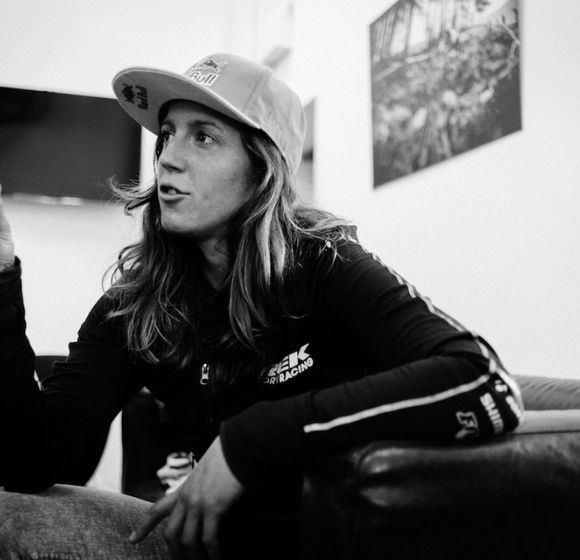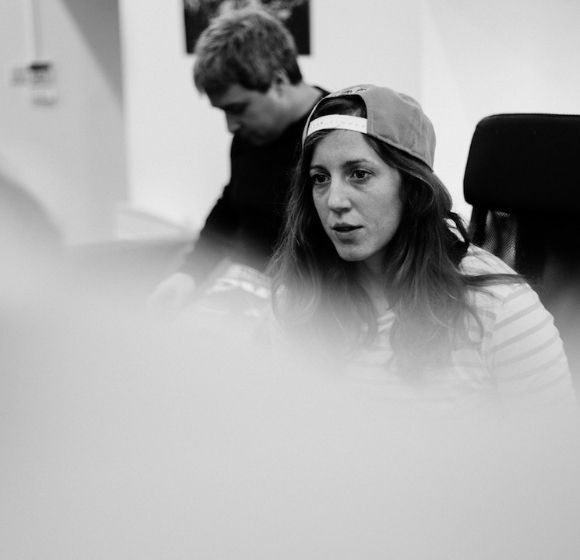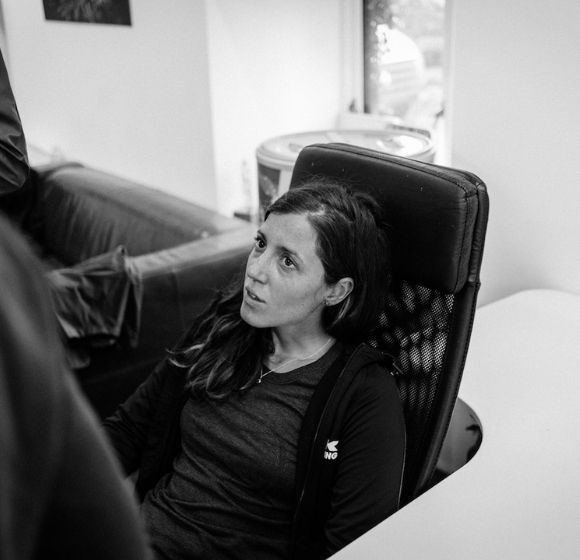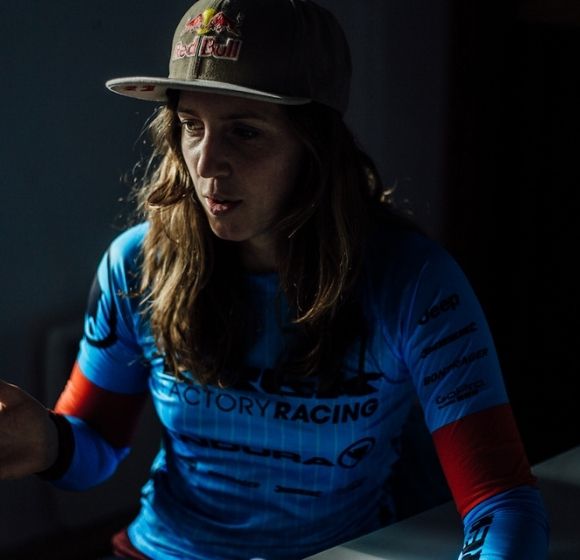
RACHEL ATHERTON
Endura’s downhill heroine
NAKED SOUL CLEANSING
Our first meeting with Rachel Atherton already feels auspicious. We join her in Wales, a day after her thirtieth birthday. Typically for a woman who has no truck with fear, she had shared her celebrations with the wider world by posting a picture of herself on Instagram - in her pants.
Stood on a dry stone wall with arms aloft, stripped and seemingly poised to leap into a freezing Welsh lake, Atherton had described her pose in the accompanying text as “naked soul cleansing”. When I remind her of the image, she responds with a sheepish grin.
“Rachel Atherton is synonymous with her sport, and among a handful of British cyclists, male or female, who are instantly recognisable to the wider public.”
“We tried to climb a mountain, but the weather was too bad, and we only got halfway up,” she explains. “Then I took off all my clothes. I nearly jumped in the lake, but I thought, ‘Maybe not. I’ll just pretend I did.’ It was so windy, I could barely stand on that wall!”.
Turning 30 has clearly not dimmed Atherton’s lust for life. A five-time UCI Downhill World Champion, five times the overall winner of the UCI Downhill World Cup, and a recent winner of BT Sport’s Action Woman award, the youngest Atherton is the family’s biggest star.
Her Instagram bio contains a refreshing statement: ‘Living. Breathing. Getting it done. Like a girl, cos I am a girl.’ Atherton is not afraid to speak her mind on equality issues, but actions clearly speak louder than words for a woman leading the most action-packed lifestyle.
A Red Bull athlete and one of the biggest draws in downhill mountain biking, Atherton is synonymous with her sport and among a handful of British cyclists, male or female, who are instantly recognisable to the wider public.
That she will race in Endura clothing in 2018 seems natural. Another maverick joins the clan, alongside defiant, intelligent characters like Cervélo Bigla’s Ashleigh Moolman-Pasio and the paracyclist Denise Schindler, a double world champion; none are given to accepting the status quo.
TRUTH AND INSPIRATION
The youngest of three siblings and the only girl in the family, one suspects that Rachel Atherton might have spent a lifetime following the mantra ‘anything you can do…’, but she is too cool for that.
The female Atherton is at least as calm and confident as her brothers. Rachel is garrulous and honest enough to admit that in the minutes leading up to a race, hurling herself and her bike down a mountainside seems like a distinctly bad idea.
“It’s always strange when people say, ‘You inspired me to start riding’. But I’m inspired by other sports people, so I guess there is some truth in it.”
She has grown up with the sport. Downhill mountain biking has, to a large degree, become a ‘thing’ on her watch. Rachel was crowned British downhill champion for the first time in 2002, racing in the youth category. A decade-and-a-half later, she is arguably the sport’s biggest star.
“Oh, thank you,” she says, genuinely humble when I raise the point, but it is not intended as a compliment, and she is not the type who needs them. Isn’t it merely stating a fact to say that she is readily identified as a downhill mountain biker, and, in the wider nexus of British sport, as recognisable as, say, Laura Trott or Lizzie Deignan?
“Hopefully, yeah. It’s always strange when people say, ‘You inspired me to start riding’. But I’m inspired by other sports people, so I guess there is some truth in it. But there’s still a lot to do; still a long way to go on the women’s side.”
The performance gap has already closed. Bigger and stronger, the elite men of downhill mountain biking will always be faster than their female counterparts, but, like the men, the elite women are already training to ride at the limit of their ability, and would leave a male rider from outside of the World Cup circuit for dead.
Atherton argues that rising standards in the women’s sport have created a vicious circle, with sponsors no longer inclined to risk investing in developing talent. The final frontier, she says, is to ensure equal opportunity at every level of the sport.
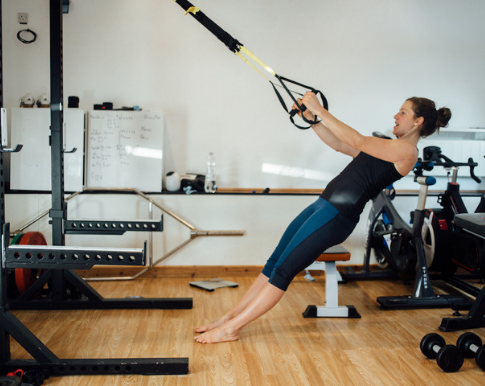
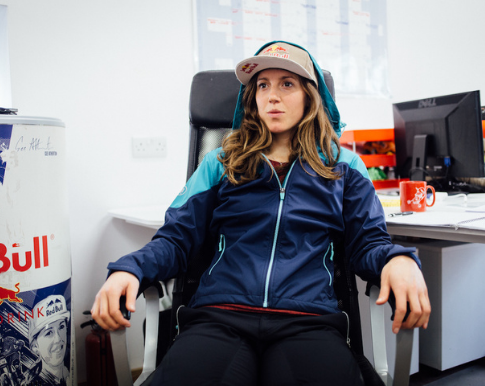
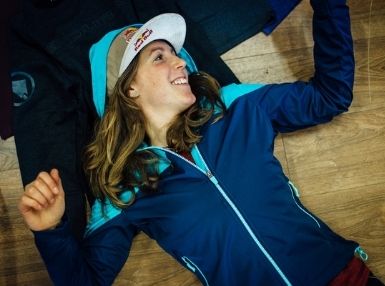
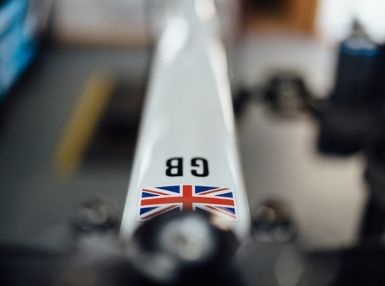
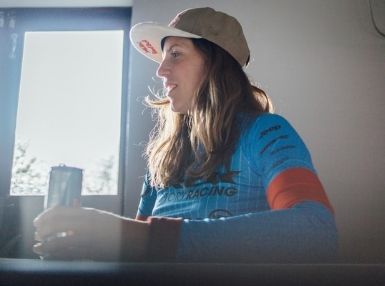
LOUD AND OFTEN
For a long time, Atherton was unaware of inequality in the sport, having grown up in a small village, racing her BMX at weekends with her two brothers. She is honest enough to admit that even now, given her World Cup dominance, and a position within the first family of downhill mountain biking, equality issues do not affect her personally.
“It took me years to realise that there was a difference, or a perceived difference, between boys and girls. I wasn’t really aware of it. For me, it was always just a case of: ‘Let’s get on our bikes, and go to races.’ It was never a ‘thing’.
“I can see both sides of the argument, I really can. The women’s field isn’t as big, or as deep as the men’s, but we train as hard, and sacrifice just as much as the men.”
“It only started to become a thing when it got a lot bigger, and I started winning big races, and talking to women around the world and realising it is a problem for some of them, and it isn’t equal. There is still a long way to go, but downhill World Cups have had equal prize money for a long time, and that’s fantastic.”
She is quick to acknowledge the advantages that mountain biking, as a comparatively young sport, offers its female athletes, compared to those with longer histories, and the attendant baggage of a hundred years or more of entrenched positions.
Atherton is very obviously proud to be a mountain biker and reluctant to criticise a sport with such an abundance of female talent. Still, she believes the point must be made, loudly and often, if things are to change, and not even for her, a superstar athlete, but for women still climbing the ladder.
“I can see both sides of the argument, I really can. The women’s field isn’t as big, isn’t as deep as the men’s, but we train as hard, and sacrifice just as much as the men. It’s still only the top few per cent of women that can make a decent living and don’t have to subsidise sport with something else, and that’s a shame.
“We take the same risks, ride the same bikes on the same tracks, and in that respect, it should be equal, but unfortunately on the sponsorship side, for a woman to make a living in any sport, is still really hard, whether that’s mountain biking or football.”
DOWNHILL CHAMPION
Atherton is a champion for her sport, even if her passion means that she is not afraid to identify weaknesses, where she believes they exist. Having discussed areas for improvement, she is quick to celebrate mountain biking’s speed, colour, passion, inclusivity and performance. Downhill, particularly, is a discipline that has escaped the ‘extreme sports’ ghetto and is now correctly identified as a sporting endeavour that requires skill, fitness and courage.
Atherton places herself among a proud tradition of British female downhillers (Tracey Mosely, Manon Carpenter), and waxes lyrical on the increasing depth of the women’s sport, witnessed firsthand during a year beset by injury, in which she was forced to claw her way back to the top, bravely competing in five of seven rounds of the UCI World Cup (and still winning another British title).
“People are really shocked by how big downhill has become, and I say: ‘That’s because it’s cool and it’s wicked fun.’ It gives you such a buzz, such confidence.”
She identifies Tahnée Seagrave as the rising star of the British downhill scene, and admits to being “blown away” by the strength-in-depth of the entire field at women’s World Cups, describing the riders as “really, really capable.”
Downhill is the blue ribband event of mountain biking. In boxing terms, it is the heavyweight title clash; viewed through the prism of track and field, it is the 100m sprint. The combination of eye-blurring speed when things go well, and brutal crashes when things go awry, breeds a gladiatorial aspect in its competitors. It’s not hard to identify the prize fighter in the 65kg figure sat opposite, lost in the folds of her hoodie.
“People are really shocked by how big downhill mountain biking has become, and I say: ‘That’s because it’s cool and it’s wicked fun.’ It gives you such a buzz, such confidence. More and more people are trying it and getting in to the sport. More and more trail centres are popping up, which gives people better access to the sport.
“Ten years ago, unless your parents were willing to drive you up the hill, or you were lucky enough to live near the farmer, you couldn’t really access downhill. Now, you have any number of bike parks to choose from and that’s kind of opened the doors to people that wouldn’t necessarily have had access before. I’m excited to see where mountain biking is going, without being involved in the Olympics, just off its own steam. Mountain biking is an awesome sport.”
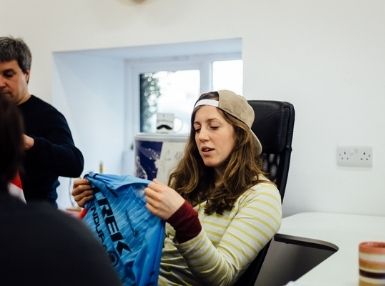
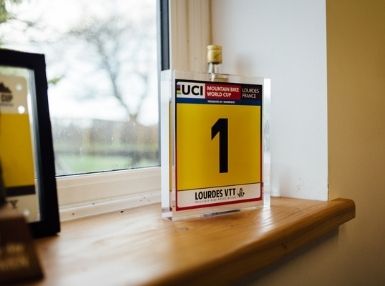

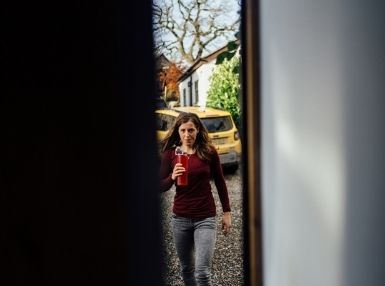
OLYMPIC HURDLE
The ‘O’ word throws an interesting light on Atherton’s sport and career. Certainly, Trott’s profile has not been harmed by her medal success at the 2012 Games in London and again at Rio 2016. Downhill enjoys far greater public participation than track cycling, but if Atherton enjoys similar recognition to Trott, she has gained it without the significant boost of a Team GB tracksuit.
Representing Great Britain at an Olympic Games was once high on Atherton’s agenda, but downhill mountain biking’s meteoric rise has taken place without the support of the IOC.
“I’d be afraid that if downhill went into the Olympics, it would become too far removed from why it is such a good sport. Maybe it would become removed from its natural technicality.”
Indeed, downhill is now so popular that Atherton questions whether it needs Olympic status. She looks at other disciplines that have gained this once-coveted status, and wonders if it is an entirely unmixed blessing.
“When BMX came into the Olympics, it changed drastically. Whether it changed for the better, I’ll leave to the athletes, but it changes a sport. I’d be afraid that if downhill went into the Olympics, it would become too far removed from why it is such a good sport. Maybe it would become removed from its natural technicality.”
She had once contemplated a similar career path to Trott and even considered it inevitable that she would ride the track, as a product of British Cycling’s ‘medal factory’, albeit as a sprinter, rather than as an endurance athlete. The moment, however, has passed.
“I don’t know whether I’ve changed as a person and I no longer need the validation of going to the Olympics, but what I’ve achieved in mountain biking has made me happy. I feel so satisfied and happy as a person that the need to go to an Olympic Games isn’t there as much anymore.”
MAXIMAL GAINS
When we meet, Atherton has recently finished reading Joanna Rowsell Shand’s autobiography and identifies the appeal of a sport free from external influence. The pursuit, whether team or individual (and Rowsell Shand was a world class competitor in both), is often portrayed as a web of fine details. For Atherton, a velodrome is a science lab, compared to the rawness of a mountain side.
Marginal gains are not sufficient to win in Whistler or at Fort William. While the rider must combine precision and speed to be successful (Atherton has missed out on world titles by hundredths of a second), downhill is a discipline where the obstacles are literal, rather than metaphorical or psychological. Track racing, Atherton believes, removes a host of ‘uncontrollables’ from the winning equation.
“With track racing, it seems that if there’s power in my legs, I’ll win. I’d love for things to be that simple.”
“The track is all about how much power your body can produce and for me that simplicity is so appealing. With downhill mountain biking there are so many variables; so many things that could happen or go wrong. But with track racing, it seems that if there’s power in my legs, I’ll win. I’d love for things to be that simple.”
Nevertheless, the Olympic Games bestows a kudos on a sport that is rarely gained by other means. An Olympic medal guarantees an athlete a level of public recognition unmatched by world or national championships. Atherton is unconcerned.
“I think when I was younger there was that drive or want to compete at an Olympic Games and become an Olympic champion. That was really quite strong, and I always imagined that I would try and switch to track cycling in the end, but no one starts a sport to become a household name.”
WIN, AND DON'T LOSE
Atherton’s enviable record would have made her a worthy member of British Cycling’s vaunted track squad, even if she is one who focusses entirely on the result and is not so concerned with ‘the process’. The psychological ploy that suggests athletes can diffuse the tension of a big competition merely by repeating what they have done in training is not for her.
Neither is its accompanying mindset: that ticking boxes on the big day is as much as can reasonably be expected of an athlete, and all that they can reasonably expect of themselves. Atherton is driven by a different force: the will to win. She struggles to understand a philosophy that prioritises procedure over more elemental passions.
“Winning feels really good, but losing definitely feels worse. When you don’t win, that feels ten times worse, and it doesn’t ever leave you. It’s hard to explain.”
“I never believe it when people say, ‘As long as I’ve done my best, that’s all that I can hope for.’ I always think, ‘I don’t believe you!’. Obviously, there are times when that’s all you can do, like when I was racing with an injured shoulder and it would have been unrealistic for me to try and win. But deep down, you think you might be able to. Winning is so ingrained in people. You can say anything, but you know why you are there.”
Atherton admits to a fascination with winning and with the forces that drive other athletes. She jokes that she was loved as a child and shouldn’t need the affirmation of victory. When it comes down to it, she reveals, even the joy of success is outweighed by the disappointment of failure. It is the gloom that accompanies losing that drives her to keep winning.
“I always think that the losing feels worse than the winning feels good. Winning feels really good, it’s what everyone aims towards, but losing definitely feels worse. When you don’t win, that feels ten times worse, and it doesn’t ever leave you. Losing is hard to explain, but that’s what makes you keep going.”
CRASH, BANG, WALLOP
Fear of losing must be a powerful force in Atherton’s life; powerful enough to drive her back to the bike, when reason and the fruits of success might convince her to stop. She has suffered terrible injuries throughout her career, but on each occasion has found the strength to return.
We speak at the end of a season in which she had given everything to find the form to defend her world title, only to crash in the qualification round (“I haven’t got over that one yet!”). After such sustained success - a near-perfect streak, lasting almost two years, through 2015 and 2016; World Cups and World Championships included - the setbacks of 2017 were hard to accept.
“I think the mental aspect of injury is harder than the physical. Obviously, there’s pain, but mentally, that shift is really hard, from aggressive racing to moments later being injured and on the rehab programme.”
She describes the sudden shift in focus that accompanied crashing at Fort William, in the second round of the 2017 World Cup, having won the opening round in Lourdes and qualified first in Scotland. The crash that dislocated her shoulder forced a split-second change of priority, from winning to recovery.
“I think the mental aspect of injury is harder than the physical. Obviously, there’s pain, and the operations and stuff, but mentally, that shift is really hard, from aggressive, attacking racing, to moments later being injured and being on the rehab programme.”
Insult followed injury. Having endured the hardships of the comeback trail for almost an entire season, Atherton felt she was in sufficient shape to defend her world title in Cairns. The disappointment of crashing in qualifying was compounded when many of her closest rivals suffered the same fate in the race.
“I’d waited all year for the World Championships and then broke my collarbone. I’d raced the World Cups, but I wasn’t fit or strong enough, and that’s a mental challenge in itself: going to a World Cup and knowing that you’re not really ready for it.
“I’d been waiting for the World Championships, which was held on an easier course and one where I’d been undefeated in previous years. Then I broke my collarbone, with a stupid mistake; my own fault. A lot of the other girls crashed in the race, and with hindsight, it would have been an easy win for me, if I’d stayed on the bike.”
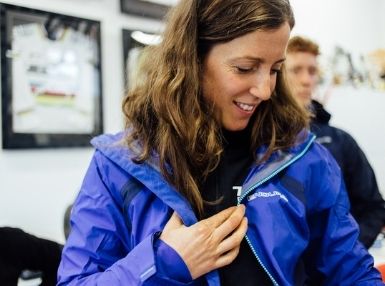

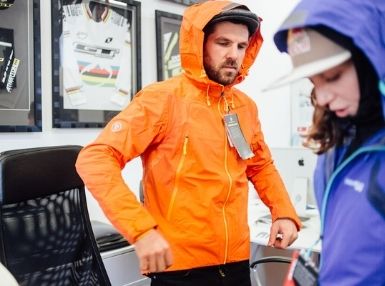
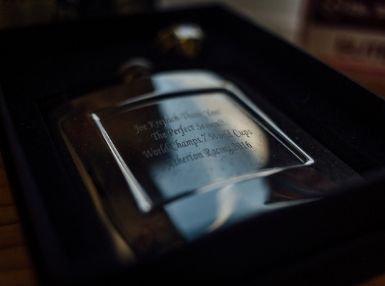
SCAR TISSUE
Hindsight, she continues, is “the worst thing”. On this topic, as with so many in mountain biking, Atherton speaks from experience. She describes herself as a “guinea pig athlete” - among the first to develop her speed to a level that exceeds her body’s ability to sustain the impact of crashing.
The mental scars concern her more. Time is a healer only of skin and bone. The pain of losing does not dissipate, regardless of the body’s ability to heal itself from physical injury.
“Training allowed me to go faster, and I was very fast, but my body couldn’t quite handle it. It’s been the pattern: a couple of amazing years, then an injury.”
“Hindsight is the worst thing, and you have to live with that. I’ve lost world championships in the past. In 2014, I lost in Norway in 2014 by 0.007 seconds, and that was like a physical pain, I was so upset and devastated. But you have to use that for motivation and learn something from it.”
Atherton, like her brothers, is an athlete who has grown with the sport. Her own development is mirrored in downhill’s increasing professionalism. The days when cross-country racers were the ‘athletes’ and downhillers the ‘dudes’ has long past. She has had to build strength to match her speed.
“When I got into mountain biking, it was very raw, and basically about how fast you could go. There wasn’t a training aspect. It wasn’t quite as professional as it is now. I was one of the first athletes - among the women, especially - to take the training seriously.
“That allowed me to go faster, and I was very fast, but my body couldn’t quite handle it. I got a lot of injuries when I was younger and just starting on the World Cup scene, because I was very fast, but my body hadn’t caught up. It’s been the pattern: a couple of amazing years, winning, then an injury. You climb back up, win again, and that’s what makes it interesting: the challenge of coming back up.”
THE WHOLE PACKAGE
To crash and come back must take a deal of courage. Perhaps it is old fashioned bravery that people admire most about downhill mountain biking, the helmeted gladiators, striking out on their trusty steeds, fearlessly confronting the combined assault of gradient and gravity.
Atherton is modest in her assessment. Few riders would attempt a World Cup course in the early stages of their career, she reasons. She has little time for process as a substitute for a winning mentality but recognises its importance to reaching a level where the risk of serious injury can be reduced, if not entirely overcome, by practice.
“Because it’s an extreme sport, people think downhill is about the skill, or how gnarly you are, or how crazy, but it’s about the whole package.”
Even a rider so accomplished wonders how she will regain her prowess, in the periods when injury keeps her from the bike. The answer, as with so much in life, is to take small steps. Only by scaling the mountain one section at a time can the summit be glimpsed; or, in Atherton’s case, can the summit be left behind.
“You think, ‘How am I going to get back to that level?’ because it seems so far away. Dan and I were talking about it on the way over. It’s just having that time on the bike, being natural and knowing what to expect all the time, staying relaxed and not stiff and scared; that’s when you get the most injuries on the bike. To get to that level, to be able to race a World Cup, the bike must become an extension of your body.”
A combination of physical performance and mental prowess is demanded to succeed in the increasingly professional world of elite downhill mountain biking. Tracks can change from ‘pedally’ to steep and technical, from one race to the next, Atherton explains. Such variety will expose weakness where it exists.
“Because it’s an extreme sport, perhaps people think it’s more about the skill, or how gnarly you are, or how crazy. But that’s why downhill is great: it’s about everything. You need the mental side to be firing, but you need the physical side too, and if one of those isn’t right, you’re not going to win. It’s about the whole package.”
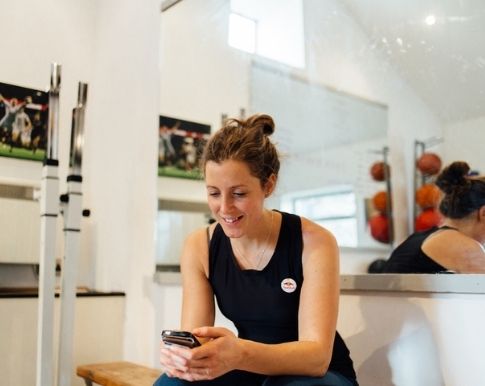
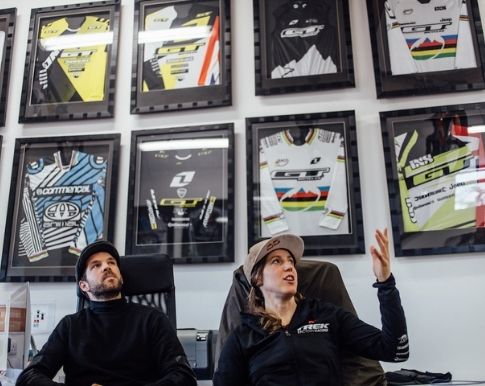
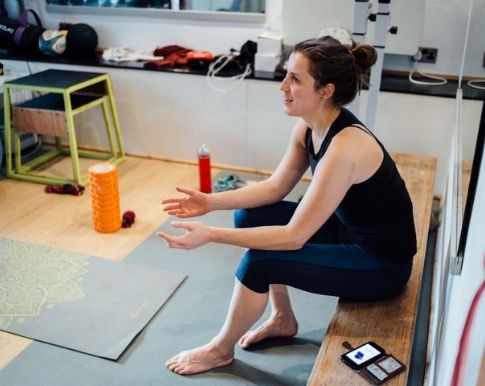
THE PERFECT RUN
Fun is an intrinsic part of downhill mountain biking. If Atherton now works as hard off the bike as she does on it, building the strength to make her faster, it is still raw speed that keeps her coming back for more. Adrenaline is more appealing than lactic acid, even if performance commands as much of her focus as pleasure.
Indeed, Atherton insists the two components are indivisible (“I have the most fun when I’m going fastest and I go fastest in a race run”). Given the choice, she would repeat the race run ad infinitum. The thrill is still overpowering, five world titles later.
“I always say a downhill run is like a dance or a meditation. Your body is so aware of everything. You’re aware of your breathing and every bit of your skin.”
For Atherton, downhill racing is a total body experience; one that grasps each of the senses and turns the dial to eleven. The brutal experience of repeated injury has taught her that speed has no qualms in extracting a toll from those who push too hard, but its thrill is irresistible.
“I always say it’s like a dance or a meditation. Your body is so aware of everything. You’re aware of your breathing and every bit of your skin. You’re even aware when you blink on the track, and you don’t want to be blinking in the middle of a rock garden. It’s all so important. You’re so aware of the crowd. Sometimes, you can smell beer, or hear the music. It’s a bizarre experience. Obviously, if you crash, it’s not fun, but if everything goes right, it’s so much fun.”
She concedes that others might not see the pleasure of hurtling down a mountainside. Time-trialists gain similar satisfaction from cycling for ten miles at maximum speed, she admits. For others, playing the piano is a transformative experience. It’s hard to picture such comparatively mundane activities floating Atherton’s boat. She is more concerned with “the perfect run”.
“I talk a lot about the perfect run. Some riders say they never have it. I feel like I have it quite a lot. Everything is perfect: you hit a line perfectly, just skim that rock, just brake, and it’s so much fun. That is why you do it again and risk stuff, because that is the fun bit.”
A FAMILY AFFAIR
Atherton will have been asked ‘the family question’ a thousand times, but the answer is intriguing, nonetheless.
There are few set-ups that compare to Atherton Racing. The likelihood of having three world class performers in the same family is extremely low. Secondly, what began as three children having fun has become a business, backed by some of the biggest companies in cycling, and run on a day-to-day basis by manager Dan Brown. The family is now a team. How is the circle squared?
“There are few set-ups that compare to Atherton Racing. The likelihood of having three world class performers in the same family is extremely low.”
“I think that working with your family, having a team with your family, definitely has its ups and downs, but it’s that honesty you need,” she says. “Having that brutal, but unwavering support, and someone to tell you exactly how it is: ‘Come on, you’re not fast enough.’ Or: ‘You need to do this better, you need to do that better. You need to go out for a ride today, stop being lazy.’
“Dan Brown, our team manager, is almost like family. I’ve worked with him my whole career. If I’m lacking confidence or being down on myself on race day, I can tell if I’m going to win by how he’s looking at me.
“If he’s looking a bit shifty, or worried, I think: ‘Shit! I can’t do it.’ And that gives me an extra motivation. If I’m the one who’s thinking I can’t do it, and he says, ‘Of course you can’, then I know that he believes in me, and I go out there and I do my best.”
The siblings remain close, despite some significant changes within their own arrangements and within the sport, including Dan’s retirement (“It’s changed the dynamics, and affected Gee and I a lot”) and an altered practice schedule at World Cups that separates men and women.
“I had to become more of a rider in my own right. I had to choose my own lines, and not just follow Gee, because we no longer practice together. That has been a huge learning curve: trusting myself as a rider and trusting my ability to judge things. To hit big jumps on my own, without following the boys, has made me grow as a rider.”
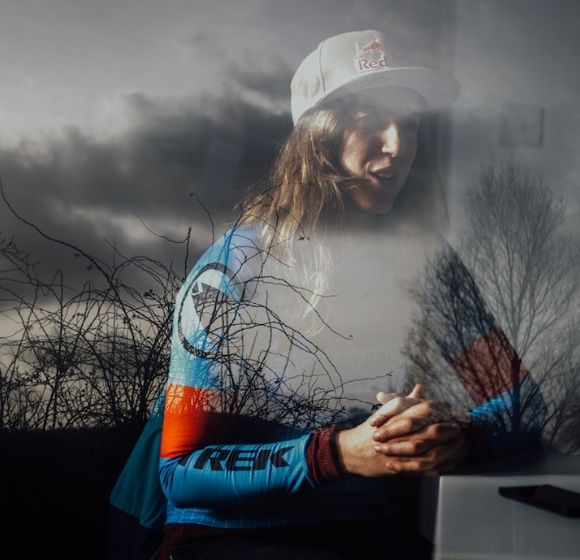
THE ATHERTON SUPREMACY
The season ahead could be pivotal, even for such an accomplished rider. Atherton admits that suffering two significant injuries in one year damaged her confidence. She has noted too that her closest rivals are about to enter their peak years.
In the face of such challenges, she turns, with some justification, to her previous achievements, in moments when she needs to restore her confidence. Reflecting on five World Championships and five overall World Cup victories must be quite a tonic.
“I want to be a stronger athlete. I’ve won everything there is to win, but every year is different, and every year brings its own challenge.”
She ‘blames’ herself for the strength of her competitors (“It’s my own fault! If I hadn’t gone so fast, they wouldn’t be so fast now!”). Two years of the Atherton supremacy has inspired her rivals to raise their game. The bad news for those with designs on her crown is that Atherton has found truth in the adage that absence makes the heart grow fonder.
“I love racing my bike. That five minutes of fun is what I live for. There’s a lot I still want to achieve as a mountain biker. I can’t wheelie, for example, which is ridiculous. I’ve been trying to learn for ten years. I think you’ve got to have goals like that. I want to be a better mountain biker.
“I want to be a stronger athlete. I’ve won everything there is to win, but every year is different, and every year brings its own challenge. It’s just keeping on going, as well as trying to think that now I’m at a point where I should be giving more back to the younger girls or the next generation.”
She has already made a start on this last goal. The Norwegian rider Mille Johnset is one of the young stars of the Atherton Academy (“She’s so good, it’s ridiculous”), and more senior riders benefit from her wisdom too. Atherton reveals that Myriam Nicole, the Frenchwoman and reigning UCI World Cup holder, sought her advice on sponsorship rewards.
DESTROYING THE MONSTERS
For Pamela Barclay, Rachel Atherton’s membership of Endura’s clan represents the addition of another strong, female personality to a group of athletes that includes outspoken campaigners like Denise Schindler and Cervélo Bigla’s Ashleigh Moolman-Pasio.
Moolman-Pasio, four times the South African time-trial champion, believes in a fresh vision for women’s road racing, while Schindler, a paracyclist and three-time world champion, pursues change even beyond her sport, arguing that people with a disability have an equal right to feel attractive and confident.
“As soon as I got back on the bike, I thought: ‘I feel myself again. I’m back. I’m who I am again. This is what I’m supposed to be doing.’”
“We’re delighted to have Rachel in the Endura clan,” Barclay says. “Her achievements as a downhill racer would make her a significant ambassador by themselves, but World Championships and World Cup victories are only part of a wider package.
“Rachel is not afraid to speak her mind on equality issues, and she’s also a champion for downhill racing and mountain biking in general. Other sports would consider themselves lucky to have such a recognisable face, as well as such a formidable competitor.”
The season ahead will tell us much about a rider with nothing left to prove. Atherton might discover a liberating force in having only herself to satisfy. She has noted the continually improving standard of her competitors, and if she ‘blames’ herself for inspiring stronger opposition, one suspects that she will find a counterbalance in destroying the monsters she has created.
Racing is Atherton’s lifeblood and the bike is a non-negotiable part of her existence. The most challenging part of recovery is time off the bike. Returning to the saddle returns her to her natural environment.
“When you have an injury on the bike, or from outside of your sport, it can really change you as a person. As soon as I get back on the bike and back into the woods, I think: ‘I feel myself again. I’m back. I’m who I am again. This is what I’m supposed to be doing.’”
FOOTNOTES Words by Timothy John. Images by Sean Hardy© 2021 ENDURA
